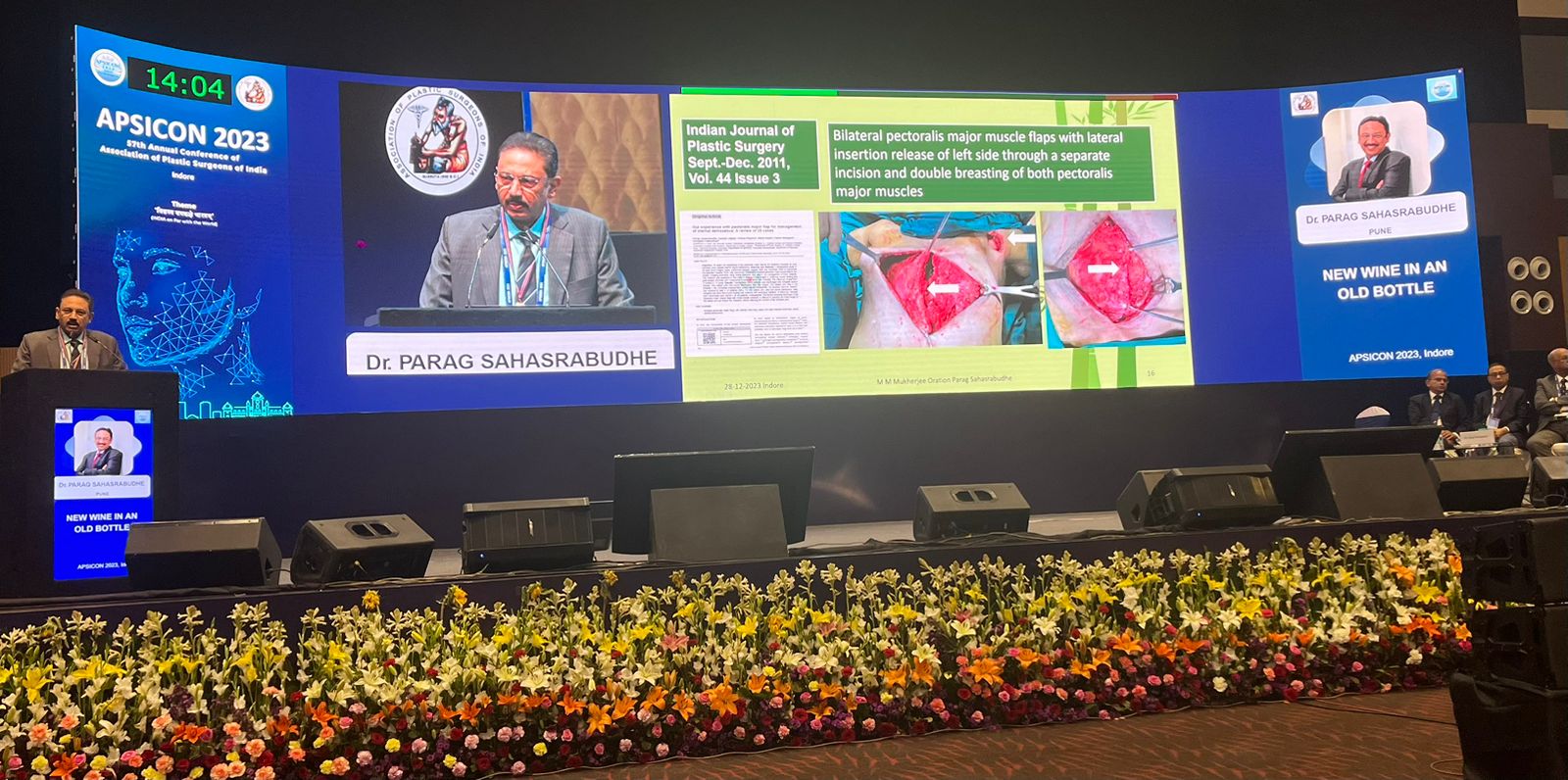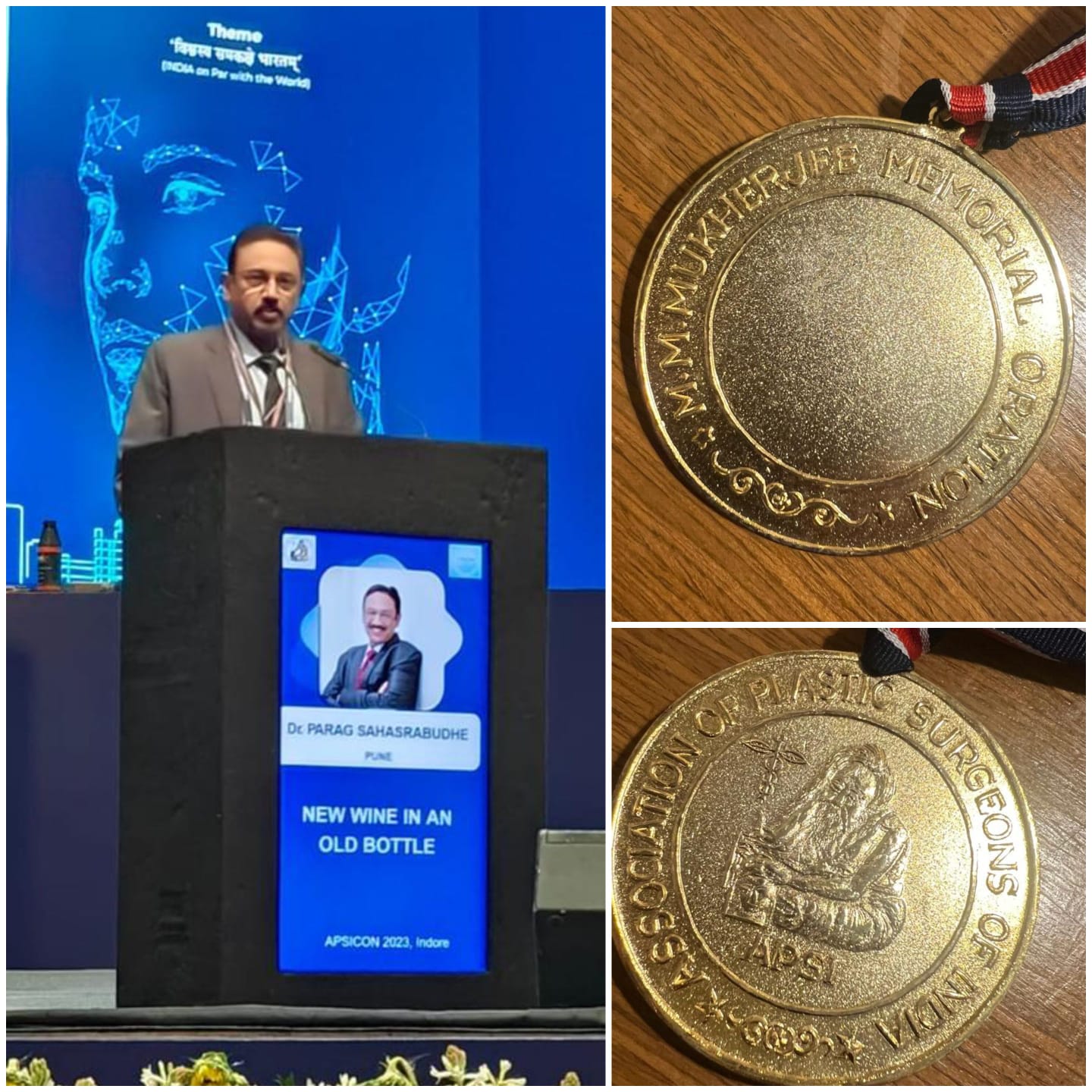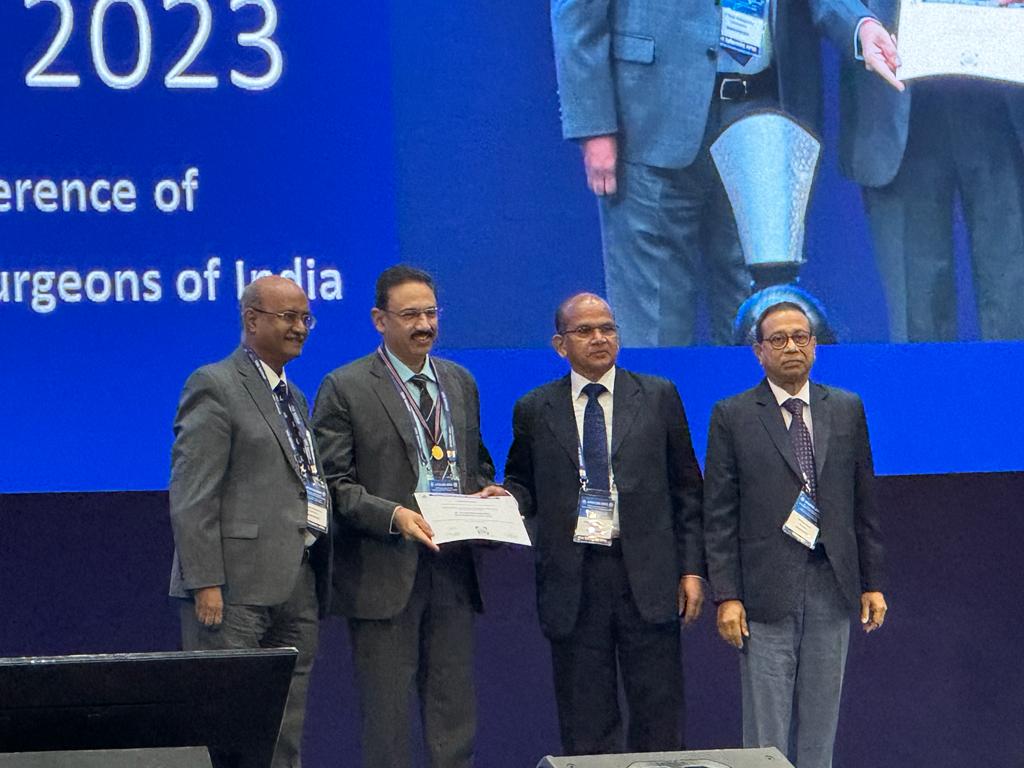Face
- Home
- Surgical Services
- Face
- Nose Surgery
- General Information
- Operation Details
- Before Surgery & After Surgery Instructions
- Gallery
General Information



Rhinoplasty (Recountouring Or Reshaping Of Nose)
Rhinoplasty is one of the most common operations performed by cosmetic surgeons today. This operation is designed to improve general appearance of the nose by doing any one or more of the following procedures
Reducing the forward projection of the nose.
Removal of the hump.
Correction of depressed nose.
Correction of deviation of the nose.
Narrowing of upper nose.
Narrowing of the tip of the nose.
Narrowing of lower nose.
Reducing the nostril size.
Lifting the tip higher.
It may also correct a birth defect or injury, or help relieve some breathing problems.
Many patients fear that after Rhinoplasty the nasal change will be so great that it will become a subject of discussion amongst their family and friends. In reality, neither the patient nor the patient's relatives or friends really remember the original shape of the nose, few weeks after the surgery.
The Best Candidates for Rhinoplasty :
It is better not to operate on teenagers until after they've completed their growth spurt -- around 14 or 15 for girls, a bit later for boys.
What will Happen in First Consultation?
In the initial consultation, the patient is asked to describe what kind of nose is desired. The surgeon then will examine the nose in particular and the face in general and discuss the possibilities with the patient.
Surgical Procedure :
The operation is done under local or general anesthesia and sedation is given prior to the surgery to help relax the patient. Rhinoplasty is performed in the hospital as daycare Surgery or may require admission for one day.
The incisions for reshaping of the nose are usually made inside the nose. The nasal skin is lifted away from the cartilage and bone and reducing or adding of tissues is done. In reduction of the nose, the bone, the cartilage, and the excess of the soft tissue are removed. The nasal bones are usually narrowed. The excessive skin left by the reduction of the underlying framework usually readapts itself to the new framework.
For depressed nose, after lifting the skin, enlargement or augmentation is done using cartilage from ear or ribs or bone from the hips or silicone rubber. To reduce the width of the lower part of the nose or to reduce the nostril size, skin is removed from the nose close to the cheek attachments. Surgery takes 2-4 hours depending upon the kind of procedure done.
Getting back to normal :
Immediately after the surgery, a restricting splint and/or dressing is placed on the nose and will remain in position for approximately 5-7 days.
The operative procedure and the postoperative period are not exceedingly painful. Since there is packing in the nose for couple of days following surgery, the patient will breathe through the mouth. This will give a feeling of having the mirror cold and may cause drying of membranes of the mouth. The nose may feel congested for several days following surgery due to internal swelling.
Uncertainty and Risk :
After the nose surgery, there is moderate to marked swelling of the nose, eyelids, cheeks, upper lip and the forehead. In most patients the swelling will increase gradually and reach to a maximum at the end of 48 hours after the surgery. The swelling and discoloration of skin will start to decrease from the third day and most of the swelling would have subsided by the end of 10-14 days. However, it takes 3-6 months for all the swelling to disappear. Occasionally whites of the eye may become blood shot and upper lip will feel stiff and unnatural for a period of time. Some numbness over the tip of the nose would persist for 2-3 months.
Complications :
When rhinoplasty is performed by a qualified plastic surgeon, complications are infrequent and usually minor. However, there is always a possibility of complications, including infection, nosebleed, or a reaction to the anesthesia.
Occasionally a secondary ‘touch up' procedure is required
Your New Look :
Day by day, the nose will begin to look better. Still, healing is a slow and gradual process. Some subtle swelling may be present for months, especially in the tip. Small changes continue to occur over a period of 4-8 months after surgery
Will it work for me?
If you have realistic i expectations then you will be satisfied with the results.
Operation Details
Surgery to reshape the nose is a very common plastic surgery procedure and it can both increase or decrease the size of nose. The shape of the tip, the bridge and also the nostrils can be changed as can the angle between the nose and the upper lip. Sometimes breathing difficulties can be corrected at the same time.
The nose is the central feature of the face, many people are self-conscious of shape which they may regard as too big, too small or have some other feature which they dislike. The characteristics of the nose are inherited from parents and develop during adolescent years. They continue until the age of 16, when the nose stops growing. It is, therefore, unwise to operate before this age.
THE OPERATION
In Augmentation rhinoplasty some additional framework is introduced underneath the skin to raise and straighten the bridge-line. Various materials are used for the additional framework such as bone, cartilage and a range of manufactured materials which are safe and well tolerated by the body eg silicone. Each has its advantages and disadvantages which are too complex to discuss in this fact sheet.
The additional framework is usually introduced into the nose through a cut either inside the nostrils or in the strut of skin between the nostrils. If a bone graft is used for the additional frame it is taken either from the crest of the hip, from a rib, from the back of the elbow or from the outer surface of the skull without causing any weakness of the 'donor' bone. If cartilage is used, it is usually taken from the shell of one or both ears or from cartilage inside the nose, which is spare or from the rib framework.
When the nose has been flattened by injury, it is quite common for the plate of bone which separates the two halves of the nose to be buckled as well. This makes breathing difficult. It can often be corrected at the same time.( Septoplasty).
If you need only a small implant, it can be done under a local anaesthetic as a day case procedure. For larger reconstructions and if a bone graft from the hip or chest is needed, you will need a general anaesthetic and, may be stay in the hospital for a few days.
An operation called Reduction Rhinoplasty reduces the size of the framework of the nose over which the skin is draped. The skin itself is not touched. The frame of the nose which is made up of bone in its upper half and cartilage in its lower half is approached from underneath the skin through cuts which are made inside the nostrils It is possible to effectively narrow the width of the nose. It is also possible to shorten the nose and to slim down a bulky tip by reducing the amount of cartilage which shapes the end of the nose.
After the operation, you will probably have dressing packs in your nostrils for a day or so which will prevent you from breathing through your nose. You will also have a firm splint over your nose for the first week or two. There should be very little pain in your nose but, if you have a bone graft taken from your hip, you can expect this to be quite painful for about 10 days, particularly when you walk.
Sometimes the size of the nose as a feature of the face is influenced by the proportions of the other features, such as the chin and the cheek bones, and to ''normalise'' the appearance of the face it may be advisable to alter these features as well, either at the same time as the rhinoplasty, or during a separate operation.
CONSEQUENCES
You can expect to have bruising and swelling of your face, particularly around the eyes, which will take up to three weeks to settle and during part of this time your nose is likely to be covered by a firm splint. Once the initial swelling has settled, you will find that your nose feels rather stiff and numb. The numbness will disappear slowly during the next few months but the stiffness is likely to be permanent. If it has been necessary to take a bone graft from another part of the body, you will be left with a scar which may be noticeable if it is on your hip or chest.
LIMITATIONS
Although it is usually possible to make a substantial improvement to the appearance of the nose with the operation, the new frame may feel unnaturally hard. This is because it does not have the consistency and flexibility of the natural frame of the nose. You may also find that the additional frame can be moved about under the skin if it does not become fixed to the existing bony framework of your nose. These limitations need not worry you provided you bear in mind that the operation is done for the sake of your appearance. Particularly if a bone graft has been used, there is a tendency for it to gradually shrink in size during the first year or two after the operation. To help compensate for this, your surgeon is likely to put in more graft than you actually need so that to start with your nose may look over-bulky.
There may be technical limitations to the perfection of appearance that can be achieved. For example, perfect symmetry may not be possible and it may not be possible to make the nose as large as might be desired. An experienced surgeon will be able to advise you what is possible in your own case.
RISKS
Like any operation that is carried out under a general anaesthetic, there is a small risk of chest infection, particularly among people who smoke. There is a small risk that infection could adversely affect the success of the operation. Were it to happen, it may be necessary to remove, temporarily, a manufactured implant if that has been used, or it may cause a graft of bone or cartilage to dissolve. In either event, it should be possible for you to have a further reconstructive operation once the infection has cleared. Sometimes a manufactured implant will extrude through the skin of the nose or its lining and need to be removed. This can happen months or years later, and is more likely if a large implant has been used or if the nose is accidentally injured.
AFTER THE OPERATION
You can expect to have some minor bleeding from your nose for the first day or two and you can gently dab this away with a gauze swab or clean handkerchief. Unless you are advised otherwise, it is best for you to leave any crusts in your nostrils for the first week and then gently cleanse them away with cotton buds. You should keep your head up as much as possible and avoid having hot baths. Do not blow your nose and try your best not to sneeze through your nose.
Stitches inside your nose will probably be of the dissolving type and do not need to be removed. If your stitches are outside your nose, your surgeon will advise you on their care and the time for their removal. You will also have a firm splint over your nose in order to protect the new frame and keep it stable whilst it is settling in. Once the splint has been removed, this protection is gone and you will have to be very careful in the way that you handle your nose for the first six weeks. You should avoid any activities where you might knock your nose and you should not move it from side to side between your finger and thumb. Try your best to sleep on your back. The initial swelling and bruising will probably have disappeared within the first two weeks sufficiently for you to feel confident to show your face in public again.
However, it will take at least three months for the reconstructed shape of your nose to mature and maybe a lot longer if you have had a lot done. Do not be too critical of your nose too early. Minor unevenness of contour is common during the first few months and usually settles with time.
Sometimes (in about 10% of patients) the nose does not look right for the patient after all the swelling has settled. In these cases, it is usually possible for the surgeon to carry out a second operation to the residual problem of appearance but, not until all swelling has settled from the first operation. Most surgeons wait for a year for this to happen. Secondary surgery like this may involve additional expense.
Before Surgery & After Surgery Instructions
PRE OP INSTRUCTIONS :
- Wash hair and face with shampoo on the night before surgery and on the morning of the surgery.
- After the above washes, do not use any hair oil, or Make-up.
- Take prescribed medicines.
- Any jewellery or metal objects that are in contact with the body could be harmful during surgery. So please do not wear any jewellery or metal objects when you come for surgery (e.g. nose ring, toe rings etc.)
- DIET: If the surgery is to be done under heavy sedation or GA-nothing by mouth (not even water) for6 hours prior to surgery. If under local anaesthesia nothing by mouth for 4 hours prior to surgery.
- Do not take ASPIRIN or Aspirin containing compounds or Birth control pills for 2 weeks before surgery.
- Stop smoking 2 weeks prior to surgery.
POST OP INSTRUCTIONS :
- DIET: Start with Liquid diet and then soft diet for next 4 days.
- Do not get areas of surgery wet until further instructions.
- Do not use toothbrush for 1- 2 days after surgery. May clean teeth gently with finger and toothpaste or mouthwash like chlorhexidine.
- Strenuous exercise such as Gymnastics or aerobics or swimming should be avoided for 8 weeks.
- Do not wear glasses for 8 weeks.
- Shampoo and hair colouring procedures may be carried out 2 weeks after surgery.
- Social activities should be restricted for 2 weeks following the surgery.
- TRAVEL: Train or bus travel after 15 days. Plane travel after 4 weeks.
- Keep as upright as possible – sleep with extra pillow at home.
- Do not bend or stoop forward – squat to pick things up from the floor.
- Do not blow your nose for 4-6 weeks after surgery. If you have to sneeze try to keep your mouth open or try to cough out.
- It is important to gently massage your nose twice a day with moister riser after doctor instructs you to do so.. The massage helps to regain the normal feeling of the nose, and assists in simulating the elasticity of the skin, to recon tour over the new framework.
- Massage your nose as follows :
- Upwards from the tip, right over the nasal bridge.
- Downwards from the tip of your nose, to your lips.
- From the middle of your nose, onto the cheeks either side.
- From the nasal bridge down under the eyes.
Cosmetic Surgery
Quick Enquiry
Contact Us
5 Shree Dhanalaxmi Society,
Off Senapati Bapat Road,
Near Symbiosis College,
Shivajinagar, Pune 411016.
Revive Laser Centre, Pune
Quick Enquiry
Quick Links
Surgical Services
Cosmetic Surgery
Reconstructive Surgery
Non-Surgical Services
PRP Treatment
Facial Rejuvenation






